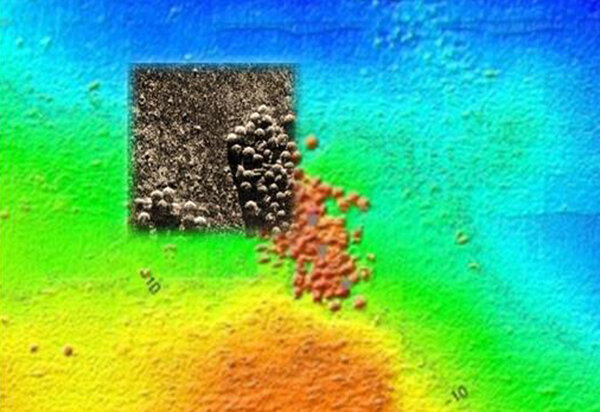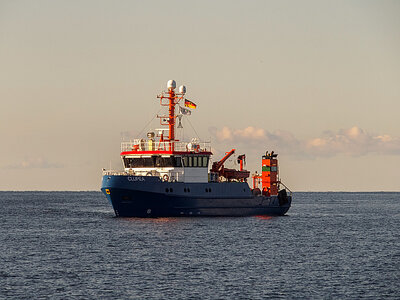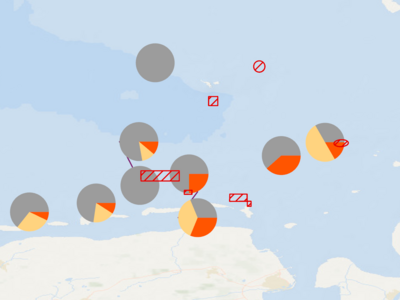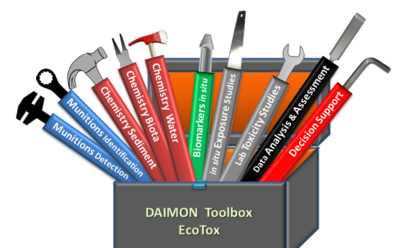Ongoing projects
Marine Munitions

Millions of tons of dumped munitions are lying on the bottom of North and Baltic Sea; in German waters approximately 1.6 million metric tons. Most explosives at the sea ground are conventional munition, like incendiary or explosive ammunition, often containing TNT or white phosphorus.In the Baltic Sea, chemical munition containing chemical warfare agents like sulfur mustard, tabun, phosgene, CLARK I/II, or adamsite was additionally dumped at large scale. The major part of the dumped munition dates from military operations during World War II and munition dumping by the Allied Powers in the aftermaths of World War II.
Chemical munitions can be found in deep areas of the Baltic Sea. Approximately 42,000 to 65,000 tons are found in the Bornholm- and Gotland-Deep and about 200,000 tons in the Skagerrak. But also shallow areas like the Little Belt carry around 6,000 tons of chemical munitions. Conventional munitions are spread over a wide area in the Baltic Sea, thus they can be found also close to the shores.
Only recently, the problematics associated with marine munitions aroused the interest of the public, politics, and science. This has been primarily triggered by the construction of offshore wind parks as well as laying of cables and pipelines on the sea ground. Frequently, these activities lead to discoveries of explosive ammunition. In addition to security issues, it is conceivable that this massive amount of munition dumped at sea negatively impacts the marine environment and its biota. This calls for action to take measures to recover or delaborate marine munitions. The following issues require particular attention: What is the scale of this contamination? What are the possible long-term effects of progressing corrosion of ammunition and the associated release of toxic substances? To what extend are humans and marine ecosystems under threat? How do we manage marine munitions?
The Thünen-Institute of Fisheries Ecology investigates the effects of dumped ammunitions on fish health in the Baltic Sea since 2011 in the framework of international research projects. In the recent past, CHEMSEA (EU-Interreg project) and MODUM (NATO project) explored the health status of Baltic cod in dumping sites for chemical munitions compared to unaffected reference sites. Furthermore, concepts for monitoring the environmental risks were developed. The ongoing DAIMON project (EU-Interreg project) targets the ecological risk assessment of marine munitions on fish by combining field studies and laboratory experiments. The ultimate goal of DAIMON is to provide decision support for dealing with dumped munitions.One example is the DAIMON Ecotox Toolbox.

![[Translate to English:] [Translate to English:]](/media/_processed_/2/9/csm_Embryo-Exp_Gelege_9F_dpf5-200513111619_c8534a8199.jpg)
![[Translate to English:] [Translate to English:]](/media/_processed_/2/9/csm_Embryo-Exp_Gelege_9F_dpf5-200513111619_9027994d44.jpg)









